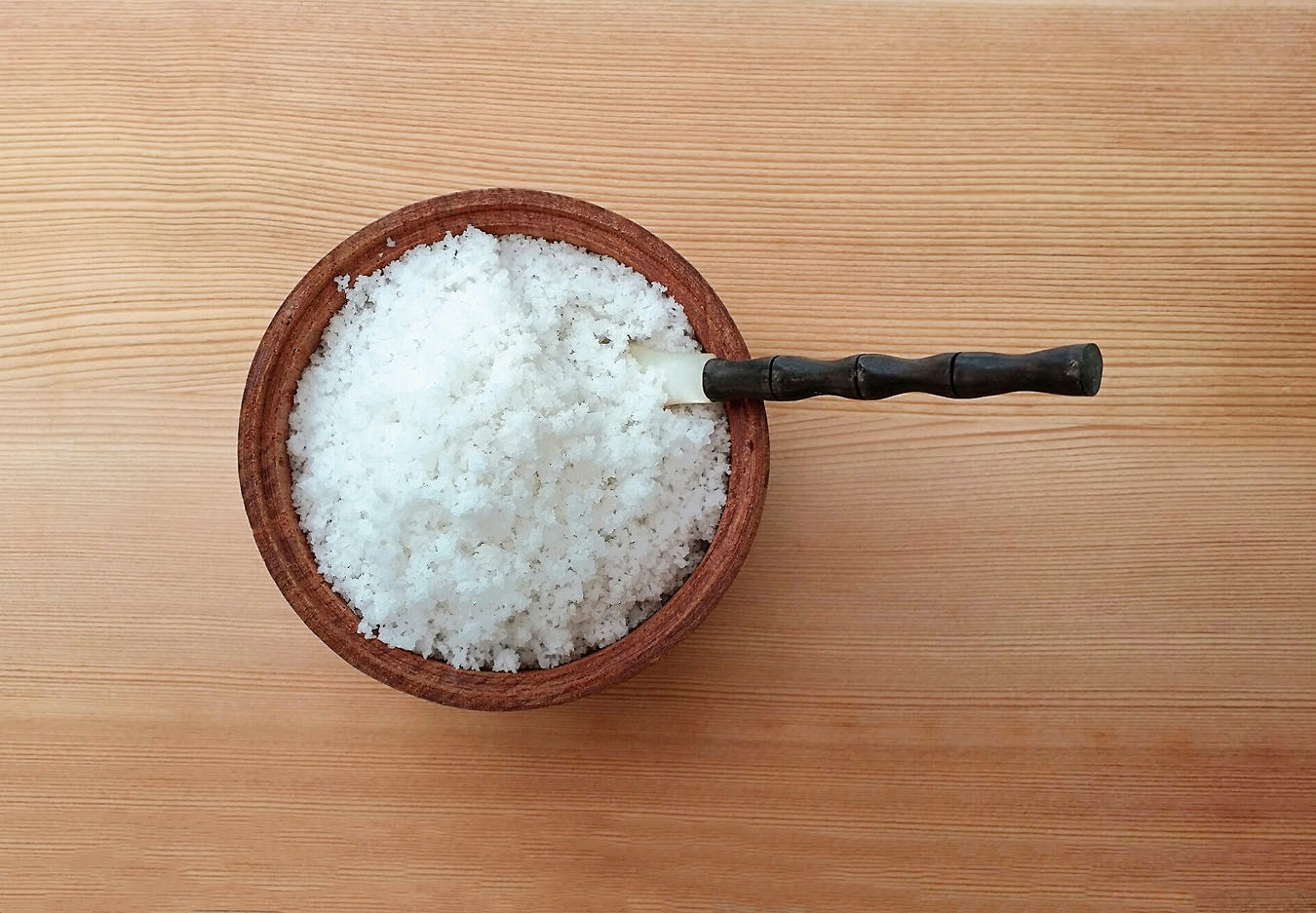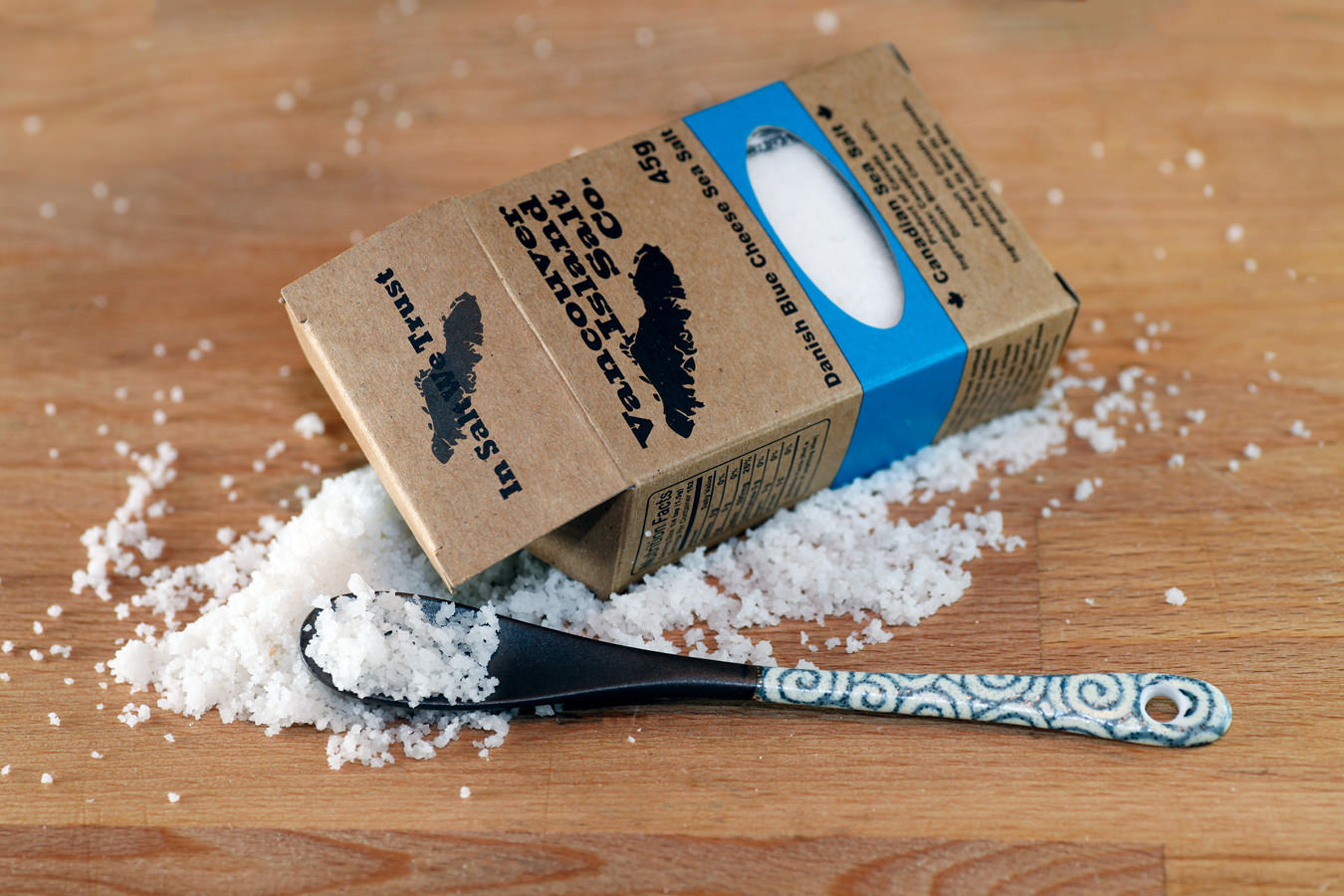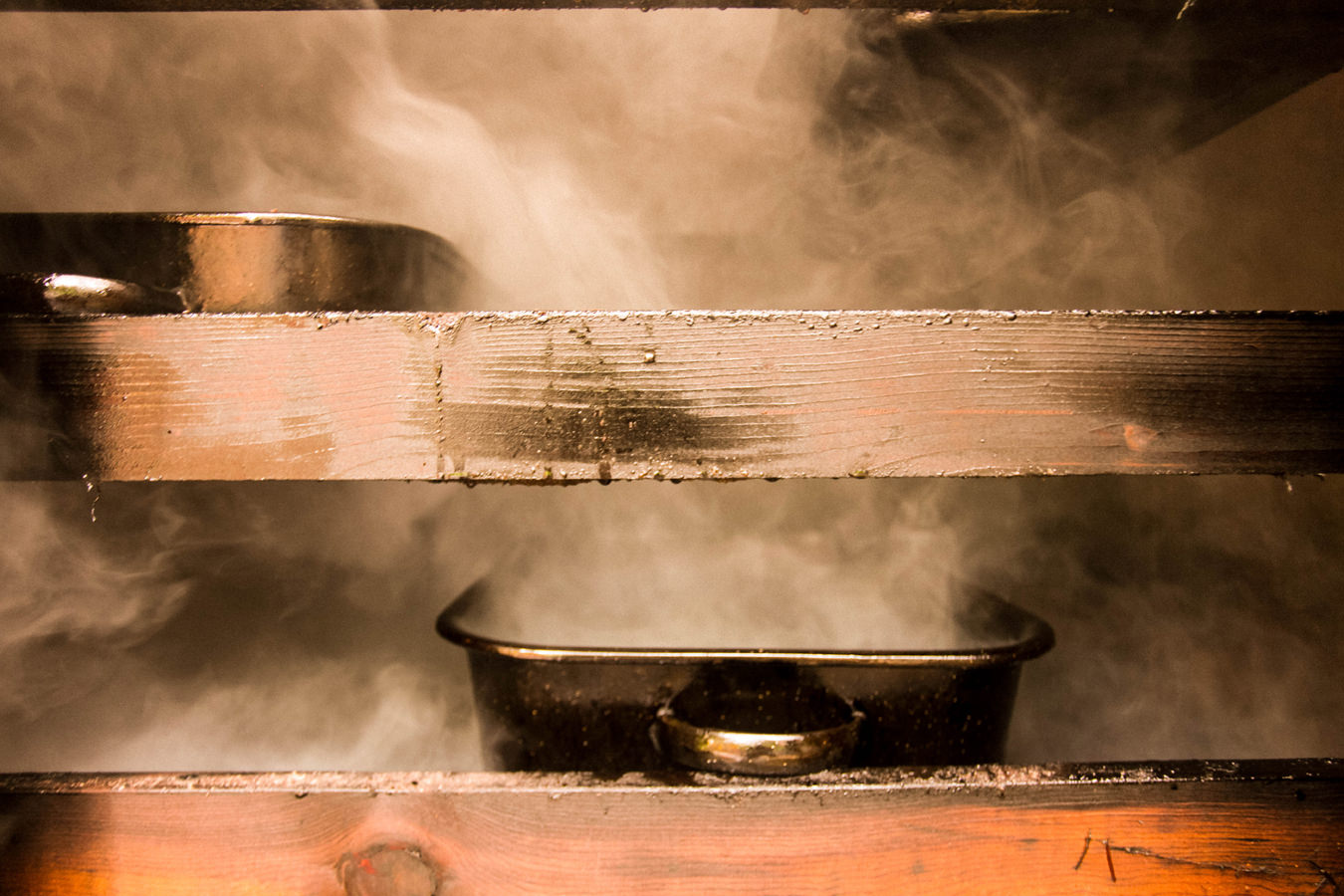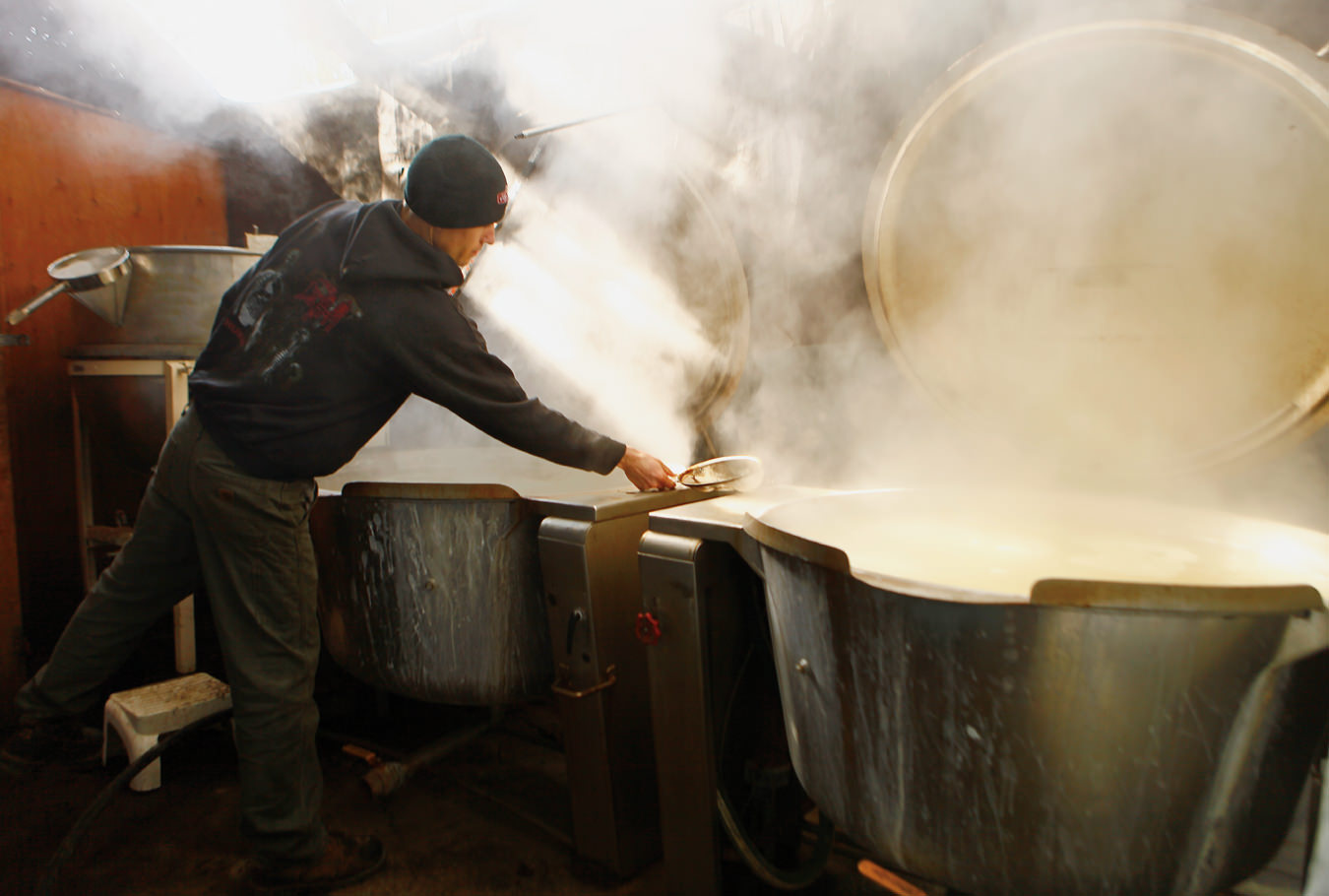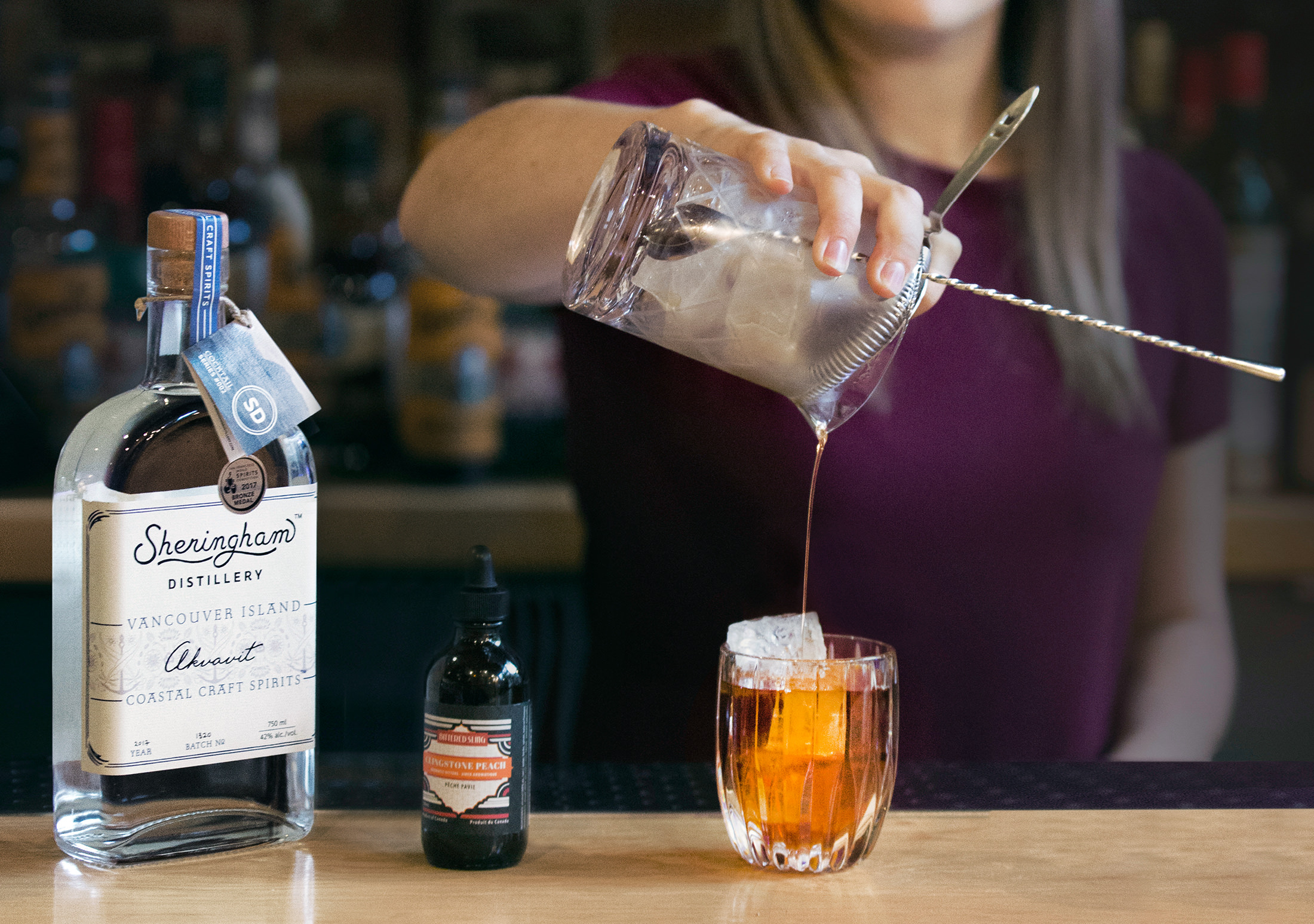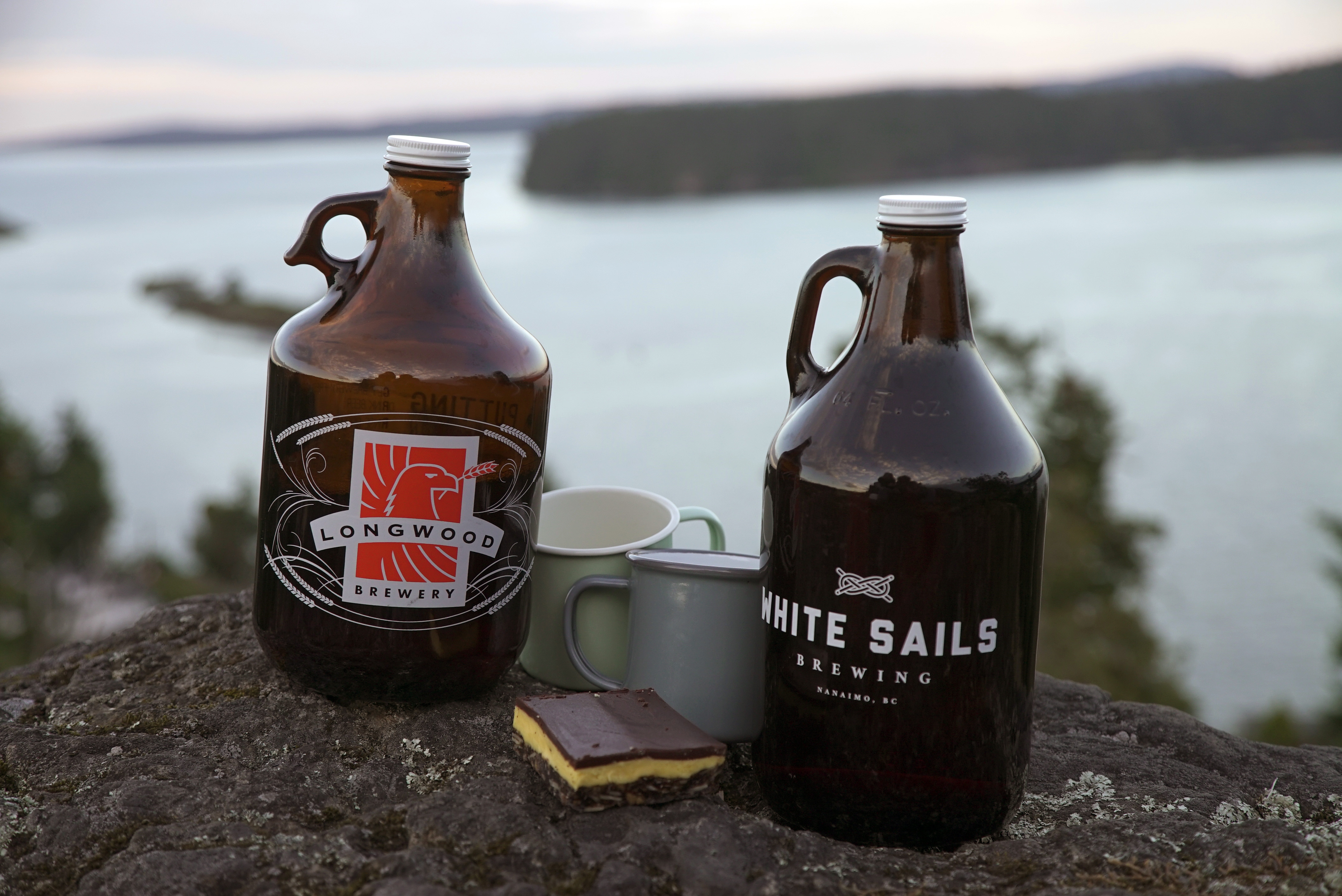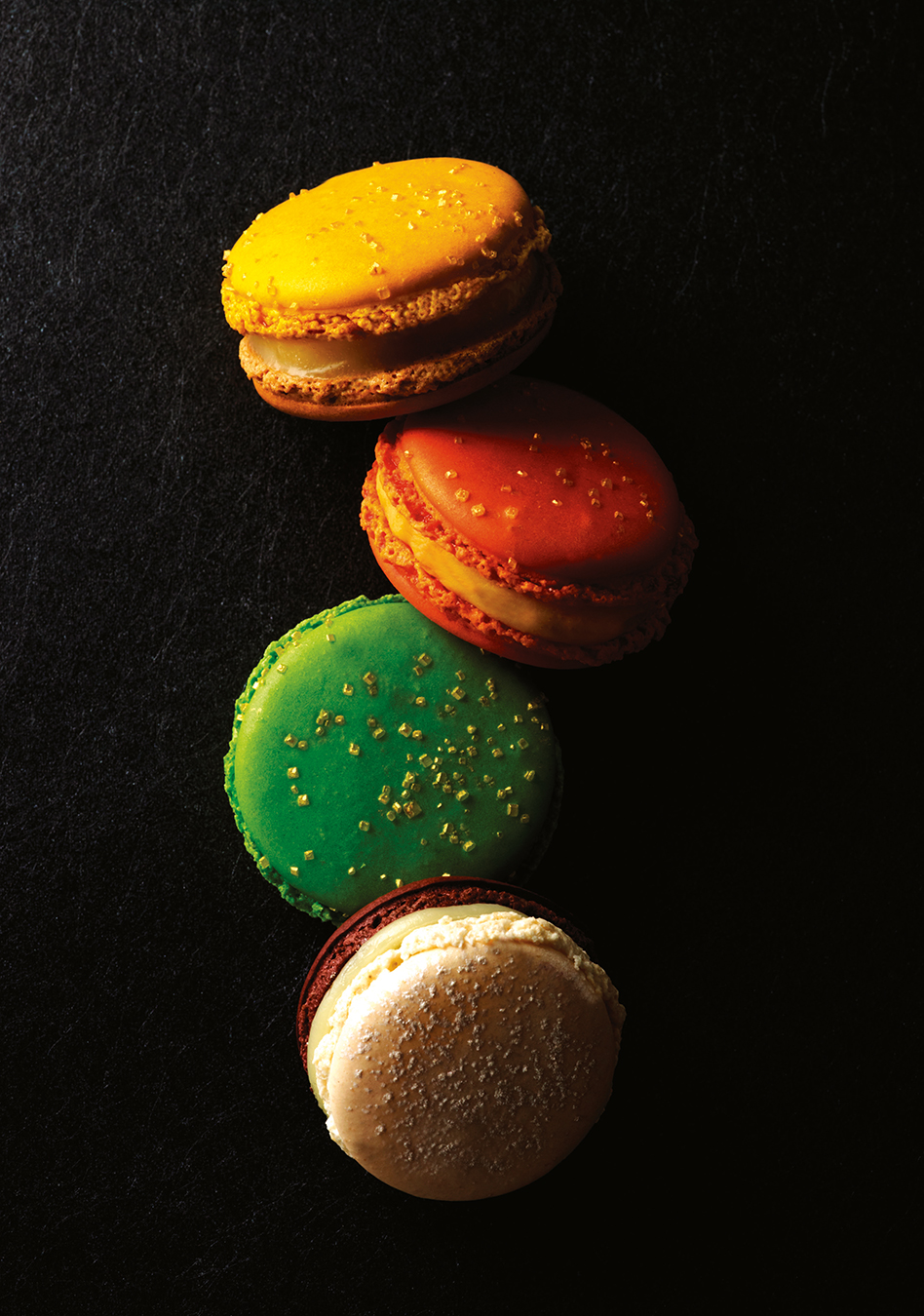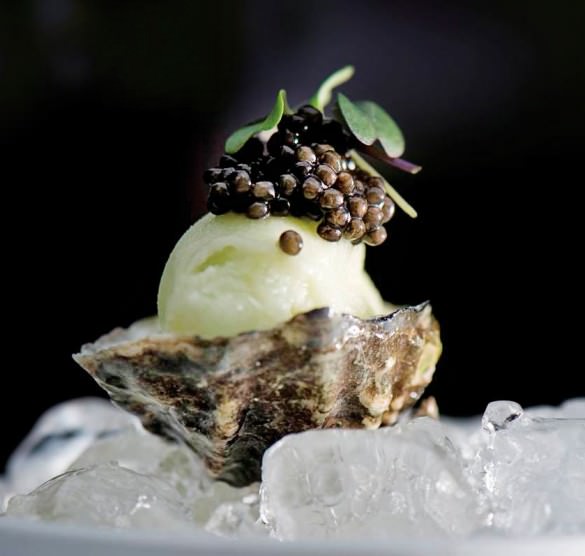Vancouver Island Salt Co.
Salt of the earth.
“In Salt We Trust”—Vancouver Island Salt Co.’s slogan. Tattooed in two-inch-high negative block letters against a thick black band, it boldly encircles Andrew Shepherd’s left bicep. He inked the phrase in 2014 to commemorate five years as a self-taught saunier in British Columbia’s Cowichan Valley. It was quite a significant milestone for Canada’s first commercial sea salt producer, who started his business on a whim and grew it into a world-class endeavour.
A casual bet, made more than six years ago, unexpectedly sparked Shepherd’s passion for making salt. “Chalk it up to me shooting my mouth off,” he laughs. “We were at Cherry Point Beach one day, and I wondered out loud why no one was harvesting sea salt in Canada. My friend bet me that I couldn’t do it, but my background as a chef told me differently.” After a long, beer-fuelled night spent babysitting a pot of boiling ocean water, Shepherd emerged victorious with two kilograms of salt. Four months after making that test batch, he was self-employed.
His salt was a hit with both fellow chefs and retailers from the word go, spurring the neophyte salt maker to dive headlong into his newfound craft. “I didn’t really know what I was getting into,” Shepherd admits. His initial efforts were rudimentary. Cramming 15 jugs, each holding 30 litres, into the back of his car, Shepherd made the minute-and-a-half drive down Cobble Hill to collect ocean water at Cherry Point Beach. He boiled it down in three pots over open wood fires to produce batches that weighed 10 kilograms each. To maintain continuity during the evaporation cycle, he hand-stoked the fires every two hours or so with wood scraps from local lumber mills. “Day and night, 365 days a year for close to three years. I’d get a couple of hours of continuous sleep at best—it was worse than having a newborn. Everyone thought I was completely insane, and I probably was. I probably still am.”
Sleep deprivation, environmental concerns, and sheer volume demand made it clear that wood fires were not the way to go over the long term. Three years ago, Shepherd switched to steam-fired kettles powered by recycled cooking oil, transforming his business into a carbon-negative operation. (Today the fuel blend is even more efficient, combining both traditional fuels and biofuels.) Vancouver Island Salt Co. now processes 30,000 litres of ocean water each week, collected in batches three days a week and about six times per high tide to ensure optimal purity. The water is filtered a minimum of seven times at various stages before Shepherd and his production manager even begin to work with it. “After all, it’s easy to clean water, but it’s impossible to clean salt.” From there, the filtered water is siphoned into six gargantuan kettles for boiling, with more water added gradually until it’s too saturated to hold salt, a point at roughly 30 per cent in concentration.
What follows is an exercise in precision as lighter fleur de sel crystals float to the surface. Timing is everything—these delicate treasures, representing only 5 to 6 per cent of total salt separation, must be skimmed from the water while they’re blooming atop it. Heavier sea salt is produced thereafter, dropping down to the bottom of the kettles as water evaporates. The sea salt’s minerality affects both its colour and taste; at the highest ratio of magnesium to calcium, the salt has a greyish cast and is a little sweeter on the palate. “If Canada was a more educated salt country,” says Shepherd, “we’d sell more sel gris. People want heavily processed whiter table salt, yet they don’t realize that chemical additives and the refining process eliminate its natural health benefits. But we’ll teach them.”
Vancouver Island Salt Co.’s product line also features seven infused sea salts, including smoked, balsamic vinegar, roasted garlic, Spanish paprika, orange and lime, jerk spice, and the best-selling Danish blue cheese. “We don’t just take a bag of herbs, throw it into finished salt, and call it a day like so many other companies do,” he says. “We take salt at different stages of harvesting, infuse it with different ingredients, and change the crystals, flavouring them as they’re forming and drying to create a more fully developed taste.”
Shepherd is quick to address traditionalists who naysay the legitimacy of his Canadian product. “I reject the notion that our fleur de sel is not authentic because we use equipment. True fleur de sel is a technical thing. It’s a different salt crystal that separates first, whether you’re getting it from a heat-induced process or a salt marsh in Brittany. The unique flavour profile of our fleur de sel makes it as good as anything in the world. I’m a really confident guy and I wouldn’t be in this if I didn’t think we could be the best.”
Photos by Lee Gibson.





